
Laundry is one of those household chores that often feels like a set-it-and-forget-it task. We toss clothes in, add some detergent, hit a button, and expect magic. But despite doing laundry week after week, many of us unknowingly make small mistakes that can subtly but surely ruin our clothes, shorten the lifespan of our trusty washing machines, and even, in some cases, pose a risk to our homes.
It’s easy to fall into routine, especially when life gets busy. However, these subtle nuances in our laundry process can significantly impact the cleanliness and longevity of our garments. Understanding everything from fabric composition to the right detergent choice and appropriate washing techniques is vital. Mastering these basic principles of laundry care is the foundation for avoiding common pitfalls and keeping your clothes looking and feeling their best.
We’re here to help you set the record straight and turn those laundry day woes into triumphs. By learning how to avoid these common laundry mistakes, you can save time and money, ensure your clothes stay clean and last longer, and keep your appliances in top shape. Let’s dive into some of the most frequent errors and, more importantly, how you can easily fix them.
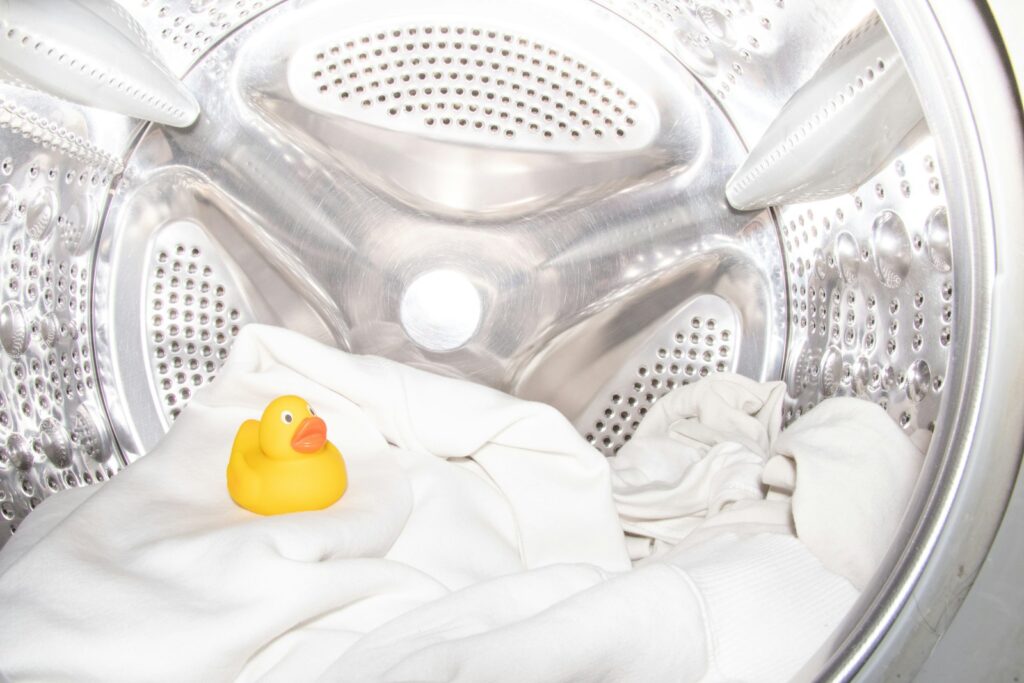
1. **Overloading the Washing Machine**It’s incredibly tempting to stuff as many clothes as possible into your washing machine. We’ve all been guilty of this, thinking we’re saving time by cutting down on the number of loads. However, this common practice does much more harm than good, turning a supposed time-saver into a cleaning inhibitor.
When your washing machine is overloaded, clothes don’t have enough room to move freely. This restricted movement prevents water and detergent from circulating adequately through the entire load, meaning your clothes won’t get cleaned thoroughly. The result? Dingy laundry that isn’t truly fresh, despite having gone through a full cycle.
Beyond just ineffective cleaning, overstuffing can seriously strain your washing machine’s motor and drum. This leads to increased wear and tear over time, potentially shortening the appliance’s lifespan and even causing mechanical issues that can be costly to repair. In extreme cases, an overloaded washer can become unbalanced, stopping mid-cycle and forcing you to redistribute the load and start all over again. To avoid these issues, always adhere to the manufacturer’s load size recommendations, ensuring water and detergent circulate adequately for a more effective clean. A good rule of thumb is to stick to the two-thirds full rule—never fill your machine beyond this level.
For bulky items like blankets, comforters, or duvets, consider washing them alone to avoid straining your washer and to ensure they get enough room to agitate and rinse properly. If your clothes come out still dirty after a cycle, it’s a clear sign you’re probably overloading the machine; reduce the load size next time for better results.
Read more about: Don’t Let These Simple Mistakes Cost You! How to Avoid Instantly Voiding Your Home Warranty
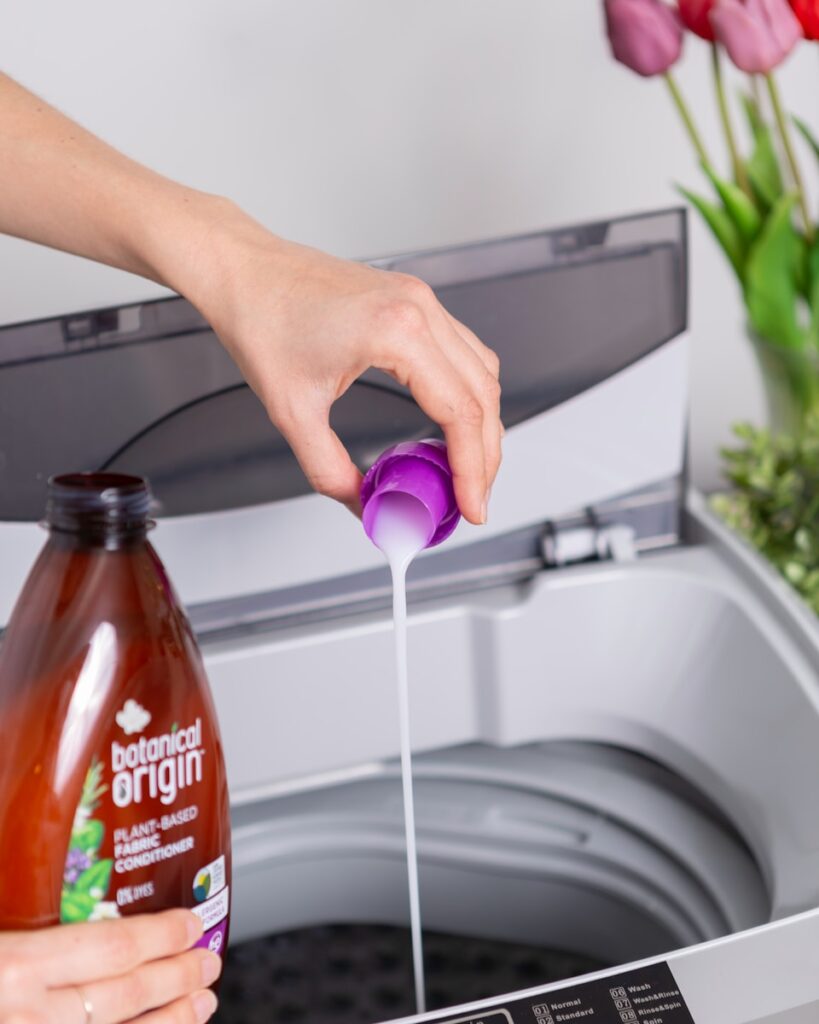
2. **Using Too Much Detergent**Many of us operate under the assumption that more detergent equates to cleaner clothes. It’s a logical thought, but unfortunately, it’s a common laundry mistake that’s far from the truth. In reality, overdoing it with detergent can lead to a host of problems for both your garments and your washing machine.
When you use an excessive amount of detergent, it tends to create excess suds that float at the top of the water. These suds can then redeposit dirt back down onto your clothes, leaving them feeling stiff, attracting more dirt, and sometimes even smelling musty despite being “clean.” This soapy residue can also create bacteria buildup in tough-to-rinse spots, such as underneath collars or between buttons.
On top of that, the buildup of soap scum and residue within your washing machine itself can lead to mold and mildew growth. This can clog up internal parts, make your machine work harder than it needs to, and result in unpleasant odors that transfer to your freshly washed laundry. This buildup shortens the machine’s lifespan and might even lead to costly repairs down the road, making the habit of using too much detergent a double mistake.
To fix this, always follow the detergent manufacturer’s instructions for the correct amount. Use a measuring cup rather than eyeballing the amount, considering the load size, soil level, and water hardness when determining the correct dosage. If you have a high-efficiency (HE) washer, always use HE-specific detergents, as they are low sudsing and specially formulated to work in these machines, which use less water. If you notice stiff fabrics or a soapy feel after washing, run an extra rinse cycle or wash them without detergent to remove residue, restoring their freshness and feel.
Read more about: Mastering the Road: 14 Simple Yet Powerful Strategies to Keep Your Car’s Exterior Spotless While Traveling

3. **Ignoring Care Labels**Those tiny symbols on clothing tags might seem like a cryptic language, or just an annoying scratchy bit of fabric. Many people overlook them entirely, yet these care labels contain crucial information about how to wash, dry, and iron your garments. Ignoring these guidelines is a frequent laundry mistake that can lead to accidental damage, shrinkage, fading, and ultimately, a reduced lifespan for your favorite clothing items.
Care labels provide important details about how to care for different fabrics, specifying recommended temperature settings, wash cycles, and even drying instructions. Delicate fabrics like wool, silk, or cashmere require special handling, and ignoring their washing instructions can ruin them in a single cycle. For instance, washing a wool sweater in hot water can cause it to shrink several sizes, while using a high spin cycle on silk can break down the fibers and leave permanent wrinkles.
To prevent unnecessary damage, always take a moment to read the label before washing. If the symbols are confusing, a quick online search can help you decode them. Create a habit of sorting clothes not just by color, but also by their care requirements, grouping delicate fabrics separately to prevent accidental damage from more vigorous washes or heavier items. When in doubt, it’s always best to go gentle—using a cold water, gentle cycle minimizes the risk of shrinking or weakening fibers, offering a safer approach for unknown items.
Some fabrics, especially wool, silk, and embellished garments, truly require extra care to maintain their integrity and appearance. For these, hand-washing or dry cleaning when necessary, as indicated by the label, is the best course of action. This simple step of paying attention to the care label can ensure your clothes keep their color, shape, and texture for much longer, saving you from premature garment loss.
Read more about: Bring Back the Black: Your Expert 12-Step Guide to Restoring Faded Plastic Trim on Any Car

4. **Not Sorting Laundry Properly**Mixing all your laundry together in one load might seem like a time-saving shortcut, but it’s a critical mistake that can lead to a host of problems. Tossing everything into one load can cause color bleeding, rough fabrics, and even damaged delicates. This oversight undermines the effectiveness of your wash and can significantly shorten the life of your wardrobe.
Sorting laundry isn’t just about separating whites from colors; it’s also about fabric weight and soil level. Dark-colored fabrics, especially new ones or vibrant hues like red, can bleed dye onto lighter clothes, resulting in unwanted stains or a dulling of brighter items. Heavy items like jeans and towels, which often require more vigorous agitation, can cause friction damage to lightweight or delicate fabrics, leading to pilling, tearing, or stretching. Conversely, delicate fabrics may not withstand the washing intensity needed for heavily soiled items, making the cleaning uneven.
To fix this, take a few extra moments to sort your laundry thoroughly before starting a load. Separate by color: keep whites (e.g., socks, t-shirts, underwear), darks (e.g., jeans, black tops, navy sweaters), and bright colors (especially new clothes that may bleed dye) apart to prevent dye transfer. Next, sort by fabric type: wash delicates (e.g., lace, silk, thin fabrics) separately from heavy items (e.g., towels, hoodies, denim) to prevent damage and ensure each fabric receives the appropriate care. Finally, sort by soil level: avoid washing heavily soiled gym clothes or workwear with lightly worn everyday clothes to prevent dirt and grime from spreading rather than cleaning effectively.
For particularly delicate items, consider investing in mesh laundry bags. These provide extra protection during the wash cycle, reducing snags, tears, and stretching, and are excellent for undergarments, lace garments, or clothes with embellishments. By grouping similar fabrics and colors, you optimize the washing environment for each type, preserving their integrity, appearance, and ensuring proper cleaning for every item.
Read more about: Ditch the Drama: Your Guide to 12 Bikini Blunders and How to Slay Your Summer Style
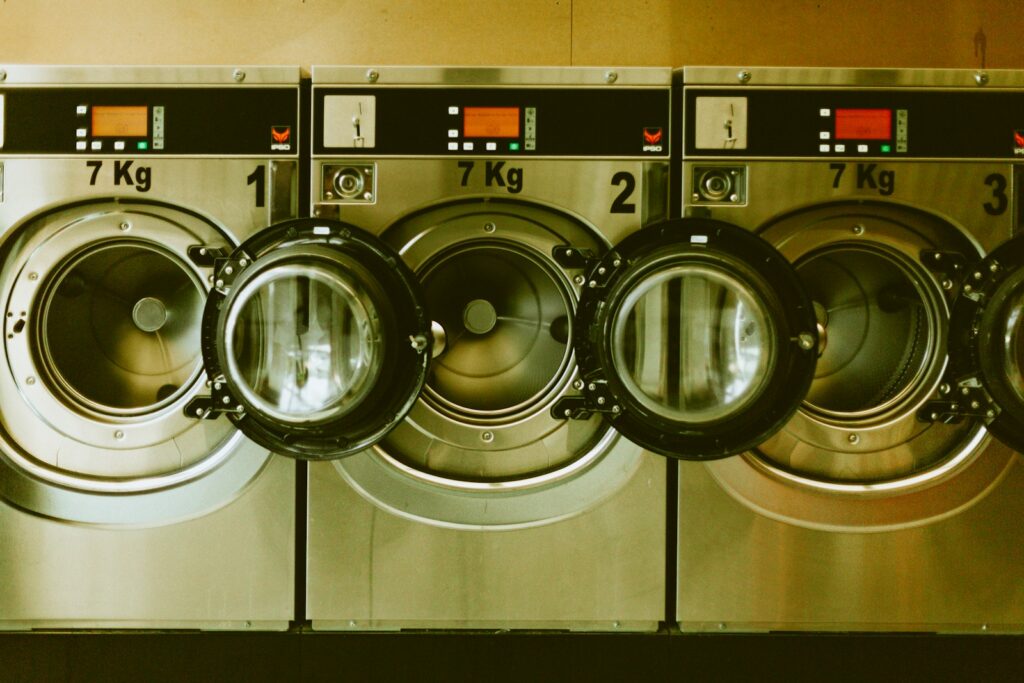
5. **Using Hot Water for Every Load (Unnecessarily)**There’s a common misconception that hot water is the ultimate solution for laundry, guaranteeing the deepest clean and disinfection. While hot water certainly has its place for specific items, using it for every load is an unnecessary laundry mistake that can cause significant damage to your clothes and inflate your energy bills. High temperatures are not always your fabrics’ best friend.
Exposing clothes to hot water too often can weaken fabric fibers over time, leading to premature wear and tear. This can cause colors to fade more quickly, especially in bright or dark garments, and can result in shrinkage for many materials. Delicate items like lace, satin, and even certain synthetic blends are particularly prone to damage when exposed to excessive heat, breaking down their structure and altering their texture.
Fortunately, modern detergents are specifically designed to work efficiently in cold water, making hot water unnecessary for most everyday loads. Using cold water effectively cleans clothes while offering an eco-friendly and fabric-safe choice. This also significantly cuts down on energy consumption, leading to lower utility bills—a benefit for both your wallet and the environment.
To correct this, be strategic with your water temperature. Reserve hot water (60°C or above) for items like towels, bedsheets, and heavily soiled items such as gym clothes, where eliminating bacteria and stubborn stains is a priority. Use warm water (30-40°C) for everyday clothes like jeans, t-shirts, and mixed fabric loads; this ensures effective cleaning without excessive wear. For delicates, darks, and brightly colored clothes, cold water (20°C or below) is ideal to prevent fading, shrinking, and fiber breakdown, preserving their vibrancy and integrity. By choosing the right temperature, you can protect your garments and reduce your environmental impact.
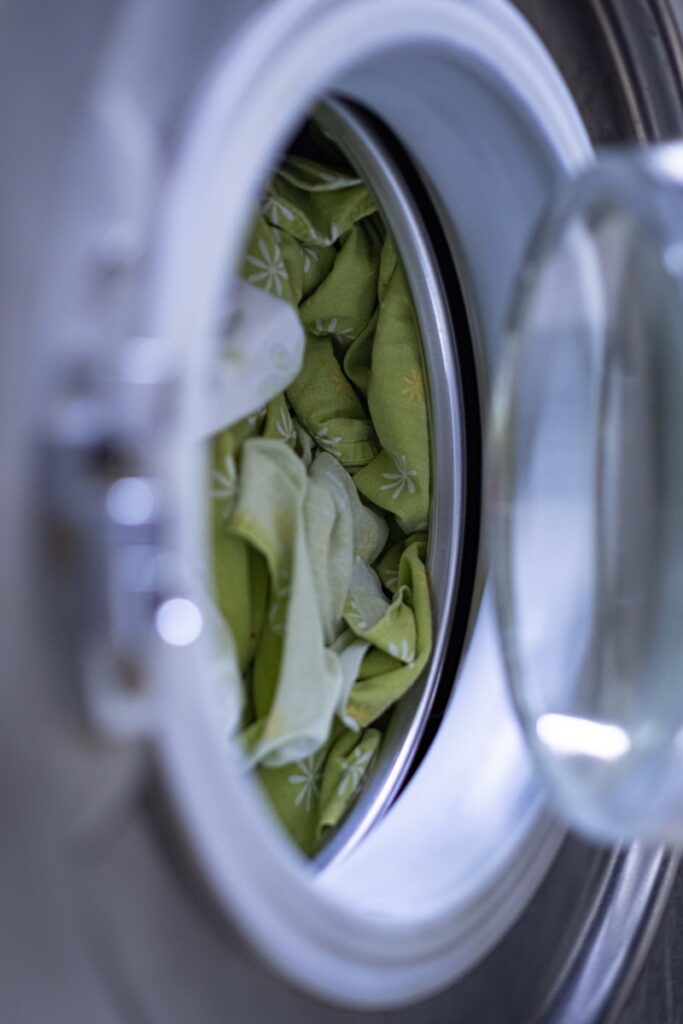
6. **Skipping Stain Pretreatment**Discovering a coffee spill, ink mark, or grease smudge on your favorite garment is never pleasant. The instinct might be to simply toss it directly into the wash and hope for the best. However, this is one of the most common laundry mistakes, as washing a stained item without proper pretreatment can actually set the stain permanently, making it nearly impossible to remove later. Certain stains, such as red wine or blood, require immediate and specific treatment before they ever go into the washing machine.
When a stained item goes through a wash cycle, especially with warm or hot water, the heat can bond the stain to the fabric fibers. Once dried, particularly in a hot dryer, that stain becomes locked in, often forever. This means that your attempts to clean it might inadvertently make the problem worse, transforming a treatable mark into a permanent blemish on your clothing.
The fix for this crucial mistake is to act quickly and be proactive. The faster you treat a stain, the easier it is to remove. As soon as you notice a stain, blot it with a clean cloth—never rub, as rubbing can spread the stain further and push it deeper into the fabric. Then, apply a dedicated stain remover or a bit of liquid detergent directly to the spot. Allow the pretreatment to sit for 10-15 minutes, giving the solution time to break down the stain before washing.
For particularly stubborn stains, consider soaking the item in cold water for a longer period before laundering; some stains, like ink or grass, may need extra soaking time to loosen before washing. Always check that the stain is completely gone at the end of the wash cycle *before* drying the item. If it still shows, treat it again and rewash, because heat from the dryer can lock it in for good. This simple extra step can be the difference between a ruined garment and one that looks good as new.

7. **Washing Clothes with Open Zippers and Buttoned Shirts**Have you ever pulled a favorite t-shirt out of the laundry only to find mysterious tiny holes or noticed frayed fabric on other garments? The culprit might not be a faulty machine or rough detergent, but rather a common laundry mistake: washing clothes with open zippers and buttoned shirts. These seemingly minor oversights can cause significant damage to your clothes as they tumble through the wash and dryer cycles.
When zippers are left unzipped, their sharp metal teeth become abrasive. As laundry swirls and tumbles, these open zippers can snag on other garments, particularly delicate items, leading to tears, pulls, and unsightly holes. This is especially true for items made from softer, thinner fabrics that are easily caught by the sharp edges. The constant friction can also damage the zipper itself, leading to misalignment or broken teeth.
Conversely, leaving shirts buttoned before laundering creates unnecessary stress on the buttons and the fabric around them. The back-and-forth motion of the washer can pull and tug at the buttonholes, causing threads to loosen, buttons to break, or the fabric to stretch and warp. This is particularly noticeable on dress shirts and other items with numerous buttons, where the strain can be considerable.
To prevent this kind of damage, take a moment to zip up all zippers on pants, jackets, and other garments before tossing them into the hamper. This keeps the metal teeth tucked away, preventing them from catching on delicate fabrics. On the other hand, unbutton all shirts before laundering to reduce stress on the buttons and prevent thread damage. For extra protection, especially for delicate items like bras, lace garments, or clothes with embellishments, consider using laundry bags. These simple mesh bags create a protective barrier, safeguarding your cherished items from snags and extending their life.
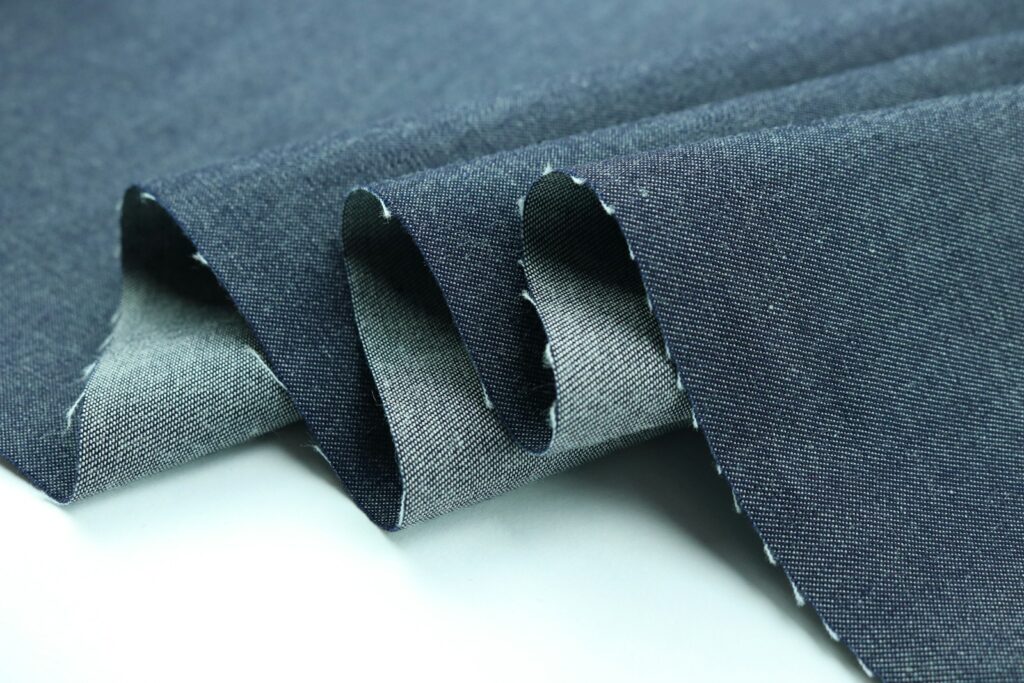
8. **Overusing Fabric Softener**Many of us instinctively reach for fabric softener, hoping for wonderfully soft and fresh-smelling clothes. However, this common practice can actually do more harm than good. While it might seem ideal for keeping towels fluffy, using too much fabric softener can paradoxically cause them to stiffen and lose their absorbency over time, making them less effective at drying.
The main problem lies in the waxy buildup fabric softener leaves on clothes, which coats the fibers and diminishes their ability to absorb moisture and breathe. This residue can be particularly detrimental to athletic wear, reducing its essential moisture-wicking properties. Fortunately, there are smarter ways to achieve softness without these drawbacks.
To prevent this, use fabric softener sparingly, following manufacturer’s guidelines, or consider natural alternatives. Wool dryer balls are an excellent chemical-free option to soften fabrics and reduce static. Another highly effective method is adding a cup of white vinegar to the rinse cycle every other load. Vinegar helps break down detergent and softener residue, keeping clothes fresh and soft, ultimately maintaining fabric performance and prolonging garment life.

9. **Neglecting Washing Machine Maintenance**It’s a common misconception that a washing machine cleans itself through regular use, but this overlooked mistake leads to significant problems. Without periodic cleaning, odors develop inside the machine, transferring to your clothes and leaving them musty or stained. The damp environment, combined with detergent residue, creates an ideal breeding ground for mold, mildew, and bacteria, ultimately affecting the cleanliness of your laundry.
Accumulated buildup from soap scum and residue not only causes unpleasant smells but also clogs internal parts, forcing your machine to work harder. This increased strain shortens its lifespan and can lead to costly mechanical issues, meaning your “clean” clothes aren’t truly clean and your appliance suffers unnecessary wear and tear. This vital maintenance step is often forgotten until issues like persistent odors or machine malfunctions arise.
Keeping your washing machine in top shape is simpler than you might think. Once a month, run an empty cycle with white vinegar or baking soda for a natural clean to eliminate odors. For a deeper disinfection, run a hot water cycle with a quart of chlorine bleach once or twice a year to kill bacteria and mold. Afterward, run another hot cycle with a quart of white vinegar to rinse thoroughly. Regularly wipe down the door, drum, and detergent tray, and always leave the door slightly ajar between loads to allow the drum to dry out, effectively preventing musty odors and ensuring your machine runs efficiently.
Read more about: The Roadblock Rundown: 12 Common Reasons Your Custom Classic Car Build Might Fail Inspection – And How to Ace It

10. **Creating Mysterious Oil Blotches from Dryer Sheets**Have you ever pulled your freshly dried dark clothes from the dryer, only to discover perplexing small oil blotches that weren’t there before? This is a surprisingly common and frustrating laundry mystery, and the culprit often lies with a seemingly innocent laundry aid: fabric-softening dryer sheets. Many people unknowingly make this mistake, thinking they’re simply adding freshness and static reduction, but some dryer sheets can unfortunately leave behind unwanted oily stains.
These mysterious oil spots occur because the chemicals or softening agents in dryer sheets can sometimes transfer unevenly or melt onto fabrics, particularly when using off-brand products that may not be as formulated to prevent such issues. The heat of the dryer can exacerbate this problem, helping to set these oily marks onto your clothing, which can be especially noticeable on darker garments, creating unsightly blemishes that can be disheartening to find after a wash.
Fortunately, these oil blotches are usually treatable. If you encounter these stains, there’s a simple fix: rub the affected areas with a bit of soap to help break down the grease and lift it from the fabric fibers. After applying soap, rewash the clothing without detergent or fabric softener. To prevent future occurrences, consider switching to clean-scented, stain-free dryer sheet options or, better yet, explore alternatives like wool dryer balls, which soften clothes and reduce static without any risk of oily residue.
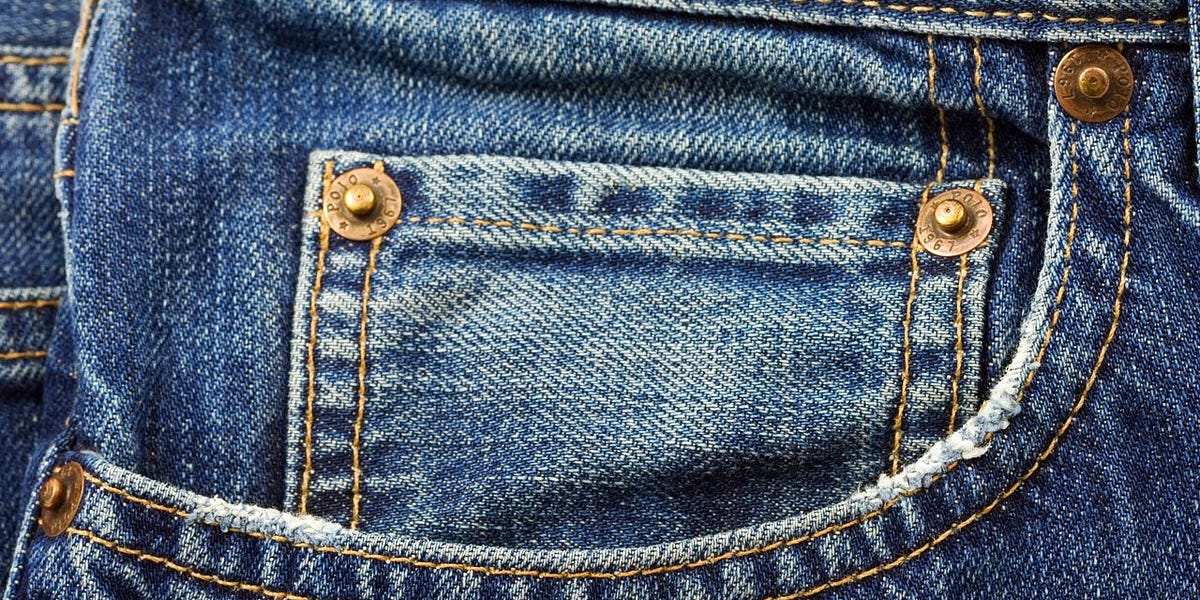
11. **Forgetting to Check Pockets**It’s a scenario many of us have experienced: pulling a load of laundry from the washer or dryer only to find a shredded tissue clinging to every garment, an ink stain from a forgotten pen, or a crumpled dollar bill that barely survived the spin cycle. Forgetting to check pockets before tossing clothes into the laundry hamper is a remarkably common mistake, one that adults are just as guilty of as children. This seemingly minor oversight can lead to frustrating and sometimes disastrous consequences for your entire load.
The perils of un-checked pockets are numerous. A forgotten pen can burst, splattering ink across multiple garments and potentially requiring extensive stain treatment—or even ruining beloved items. Tissues disintegrate into countless tiny white bits, which then adhere stubbornly to fabric, requiring tedious removal. Even small, hard objects like keys or coins can clang around in the machine, potentially damaging the drum or other delicate items.
The simple solution to this widespread laundry mistake is to take a few extra moments for a quick pocket inspection before your clothes ever make it into the washer. Develop a habit of thoroughly checking all pockets—in pants, shorts, jackets, and even hoodies—as you gather your laundry or before placing it into the machine. This small act of due diligence can save you significant time and effort in stain removal, lint picking, and potential damage to your clothes or appliances, preserving the quality and cleanliness of your clothes.
Read more about: Unlock the Open Road: 12 Genius Ways to Double Your Car’s Cargo Space for Any Road Trip
Mastering your laundry routine doesn’t have to be a daunting task. By understanding and correcting these common laundry mistakes, you’re not just ensuring your clothes come out cleaner and last longer; you’re also protecting your valuable appliances and embracing a more efficient, eco-friendly approach to household chores. Each small adjustment, from checking pockets to cleaning your lint trap, contributes to a smoother, more effective laundry day. So go ahead, put these tips into practice, and enjoy the satisfaction of perfectly cared-for clothes, every single time!



